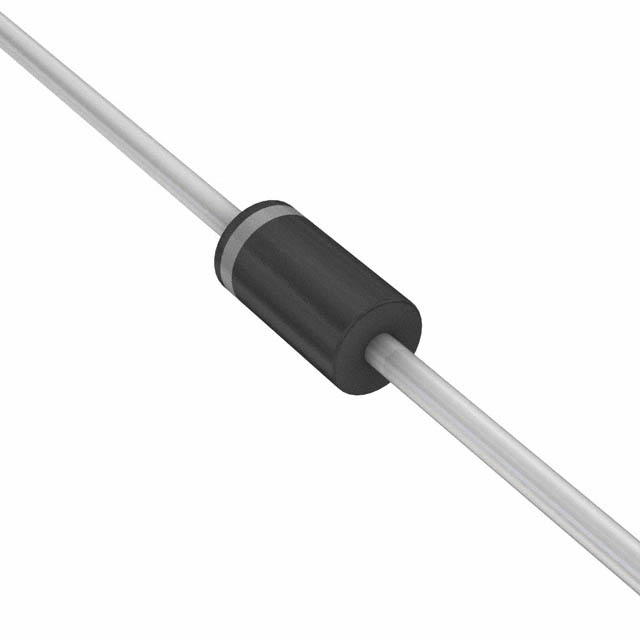Consulte las especificaciones para obtener detalles del producto.

1N4759AHB0G
Product Category: Semiconductor
Basic Information Overview: - Category: Zener Diode - Use: Voltage regulation and protection in electronic circuits - Characteristics: Precise voltage regulation, low impedance, high reliability - Package: Axial leaded, DO-41 package - Essence: Regulates voltage by maintaining a constant output voltage under varying input voltages - Packaging/Quantity: Available in reels or bulk packaging, quantity varies by manufacturer
Specifications: - Voltage Range: 3.3V to 100V - Power Dissipation: 1.0W - Operating Temperature: -65°C to +200°C - Tolerance: ±5%
Detailed Pin Configuration: - The 1N4759AHB0G has two leads, with the anode connected to the positive terminal and the cathode connected to the negative terminal.
Functional Features: - Provides stable voltage regulation - Protects sensitive components from voltage spikes - Low reverse leakage current
Advantages: - Precise voltage regulation - High reliability - Low impedance
Disadvantages: - Limited power dissipation capability - Tolerance of ±5% may not be suitable for some applications
Working Principles: The 1N4759AHB0G operates based on the Zener effect, where it maintains a constant voltage across its terminals when reverse biased. This allows it to regulate voltage in electronic circuits.
Detailed Application Field Plans: - Used in voltage regulator circuits - Overvoltage protection in electronic devices - Signal clamping and limiting
Detailed and Complete Alternative Models: - 1N4728A, 1N4733A, 1N4744A - BZX55C, BZT52C, BZX84C
This comprehensive entry provides detailed information about the 1N4759AHB0G Zener diode, including its specifications, pin configuration, functional features, advantages, disadvantages, working principles, application field plans, and alternative models.
Enumere 10 preguntas y respuestas comunes relacionadas con la aplicación de 1N4759AHB0G en soluciones técnicas
What is the 1N4759AHB0G diode used for?
- The 1N4759AHB0G is a Zener diode commonly used for voltage regulation and protection in electronic circuits.
What is the voltage rating of the 1N4759AHB0G diode?
- The 1N4759AHB0G has a nominal voltage of 39V, making it suitable for applications requiring stable voltage references.
How does the 1N4759AHB0G diode regulate voltage?
- The 1N4759AHB0G operates in the reverse-biased breakdown region, maintaining a constant voltage drop across its terminals to regulate the output voltage.
Can the 1N4759AHB0G be used for overvoltage protection?
- Yes, the 1N4759AHB0G can be employed to protect sensitive components from overvoltage conditions by shunting excess voltage to ground.
What are the typical applications of the 1N4759AHB0G diode?
- Common applications include voltage regulators, voltage references, overvoltage protection circuits, and power supplies.
What is the maximum power dissipation of the 1N4759AHB0G diode?
- The 1N4759AHB0G has a maximum power dissipation of 1.3W, allowing it to handle moderate power levels in circuit designs.
Is the 1N4759AHB0G suitable for automotive electronics?
- Yes, the 1N4759AHB0G is often used in automotive applications for voltage regulation and protection due to its reliability and performance.
What are the temperature considerations for the 1N4759AHB0G?
- The 1N4759AHB0G has a specified operating temperature range of -65°C to +200°C, making it suitable for a wide range of environments.
Can multiple 1N4759AHB0G diodes be connected in series or parallel?
- Yes, multiple 1N4759AHB0G diodes can be connected in series to increase the breakdown voltage or in parallel to share current.
Are there any specific layout or mounting considerations for the 1N4759AHB0G?
- It is important to ensure proper heat sinking and thermal management for the 1N4759AHB0G to maintain its performance and reliability, especially at higher power levels.

